open ideas competition for the construction of an infopoint. XXIII UIA World Congress of Architecture
location: Torino, Italy
total area: 100 m2 + 100 m2 outdoors
year: 2008
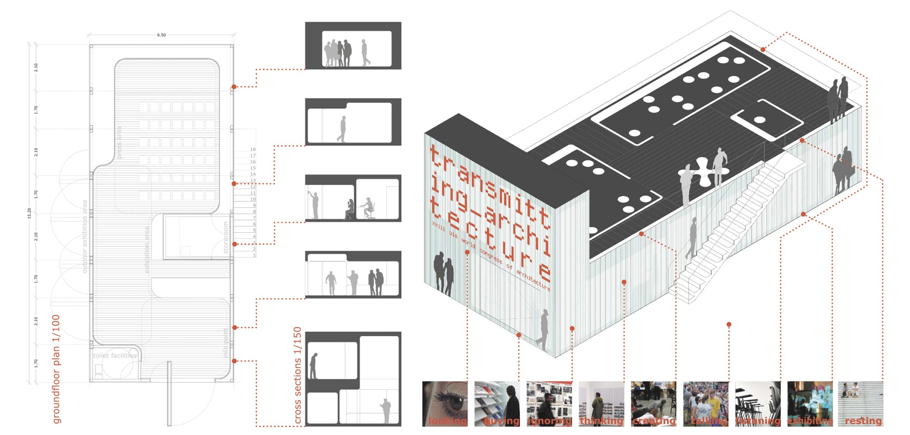
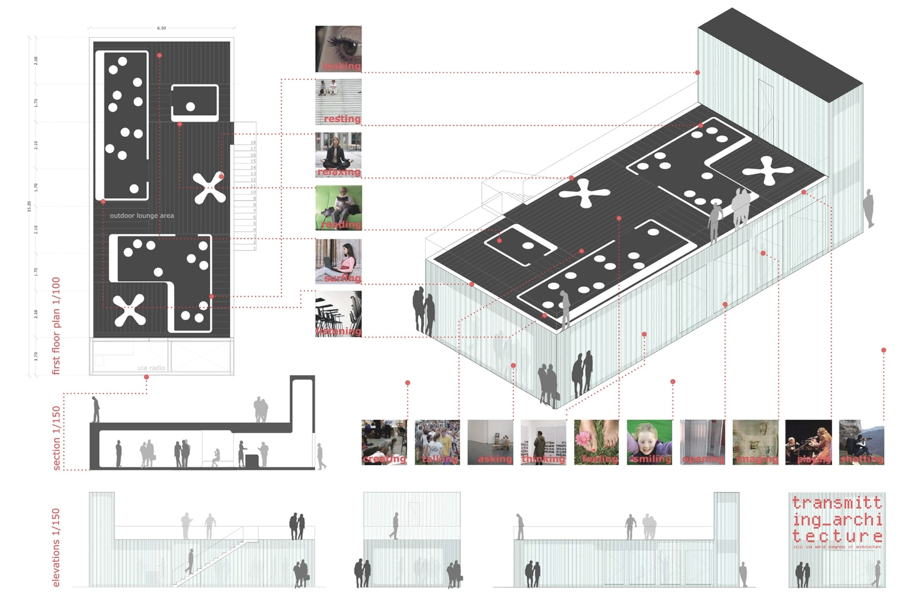
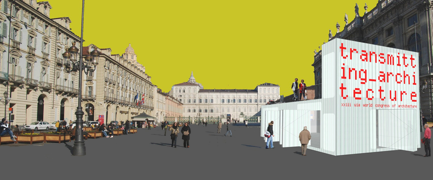
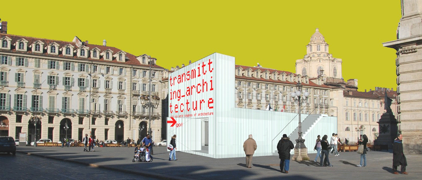

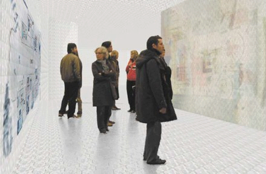
Exhibition panel or building? The building is conceived as a simple volume enclosed by a translucent skin of variable thick. The skin is like a wall made of a double layer of polycarbonate and polymers which transforms the reality and also generates a complex perception of the space inside. The physical properties of polycarbonates and polymers, such as transparency and refraction, cause different gaps, connections and distortions from the observer’s point of view, as well as some other effects like rebounds, twinkling and disintegration, which are based on the texture of those materials. The skin also provides a good surface for displaying images, texts, light and information on its both sides, so the building turns into a transmitter object interacting with the visitors. The skin encloses a fluid space inside, as a continuous surface from wall to ground who defines three inner areas: info point, exhibition hall, and press-room. They are not limited by fixed elements so the inner space can be understood as a whole. Between the two layers of the skin are placed the electric grid and other facilities, such as data storage and toilet, which remains separated from the main space. On the upper floor we find the radio room for the UIA and a chill-out space that could be enjoyed for cocktail parties. In relation to the piazza, the information displayed inside over the skin can be also accessible by the citizens from outdoors when the doors are open, reinforcing the idea of the info point as a transmitter object.
